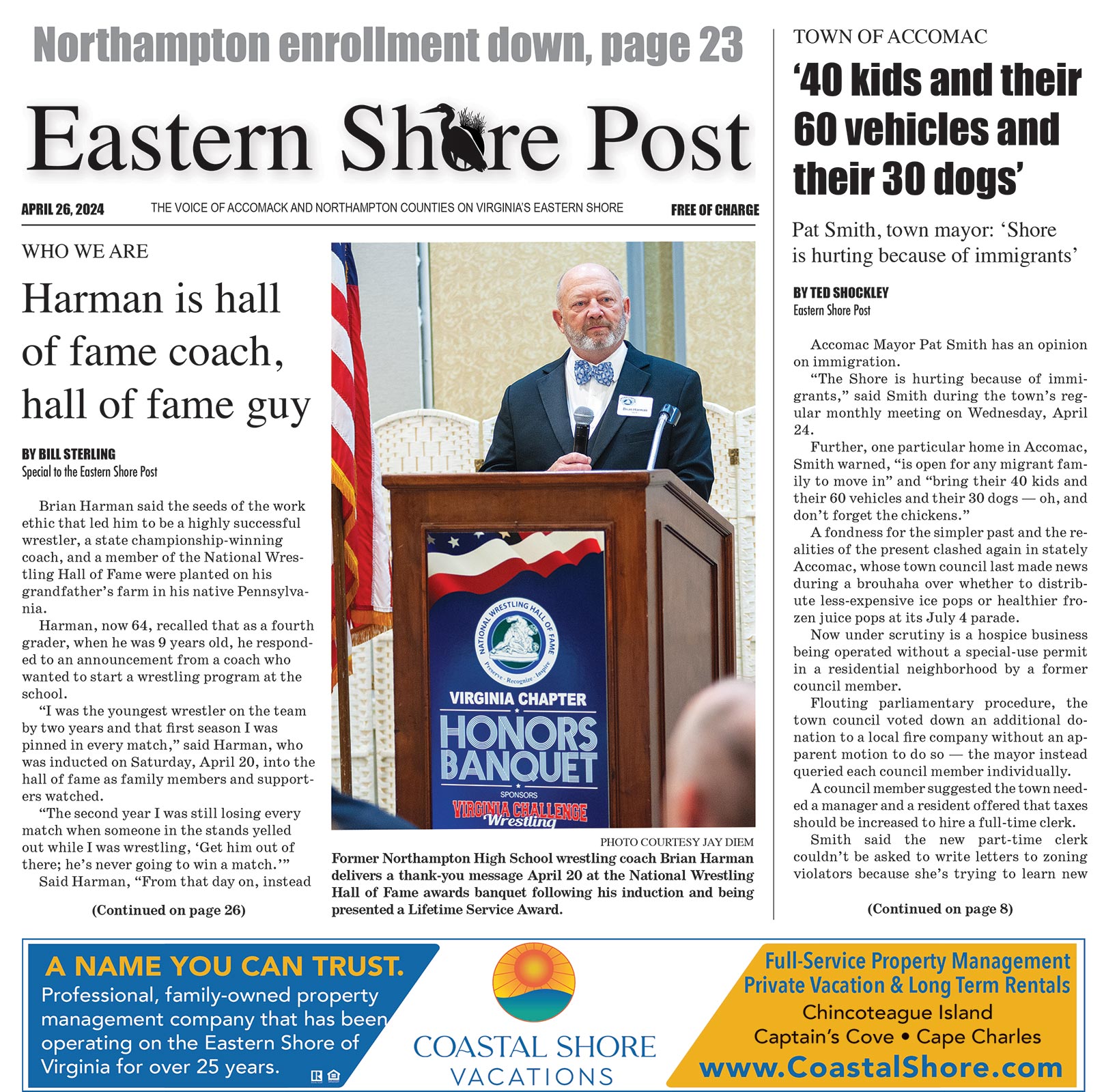By Bill Sterling —
Special to the Eastern Shore Post
With the airing of the documentary “The Last Dance,” a story of the Chicago Bulls’ championship run in the 1990s, a younger generation is learning just how large a presence Michael Jordan commanded during his legendary run.
Jordan was everywhere it seemed, appearing in countless commercials while leading the Bulls to six NBA championships in the ’90s. He was as iconic a figure as the world had ever seen. Everyone wanted to “be like Mike,” as the slogan proclaimed.
To give one measure of how Jordan exploded on the scene, when he signed a shoe deal with Nike, then a little upstart company trying to compete with Converse and Adidas, Nike officials were hoping to have sales of $3 million in the next four years. In the first year alone, the landmark “Air Jordan” signature sneakers grossed $126 million.
Back in 1982, I had the opportunity to meet Jordan up close and personal but missed out, though it was not completely my fault.
The Accomack Parks and Recreation staff held a basketball clinic in the summer of that year, featuring three players from the University of North Carolina team that had just won the NCAA basketball championship a few months earlier when Jordan, only a freshman then, hit the game-winning shot with just seconds left in the game to edge Georgetown.
I was at the clinic with Wayne Wichmann, a friend and fellow employee at the newspaper. Somewhere deep in my files is a photo of Wayne, his son Andy, me, and a very tall Sam Perkins, all 6 feet, 9 inches of him.
The two other Tar Heel players attending the clinic were Cecil Exum, a little-used reserve, and the aforementioned Jordan. Bill Allen, then director of the county parks and recreation department, had organized the clinic with the help of his son, a good friend of Perkins.
At the time, Perkins was as big a name as Jordan, if not bigger. After all, the New York City native had been named the ACC Rookie of the Year the previous season, had been selected to the first of his three All-American teams and was on his way to finishing as the Tar Heels’ all-time leader in rebounds and blocked shots, and the second-highest scorer in team history when his career was completed.
So, I was just fine having a long interview with Perkins while Jordan buzzed around the court engaging the 50 or so youth who attended the clinic. Every once in awhile, Allen would tell Jordan to take a break and speak to the reporter, but Jordan was acting like a kid himself and continued to work with the youth, even sneaking in one dunk that I was a second late catching on film while I stood on the sidelines with Perkins.
Eventually, the clinic came to a close, and I never had the chance to actually converse with Jordan, though at the time I wasn’t too disappointed, happy to talk with the personable Perkins.
I talked to Allen recently to get his thoughts on that clinic held some 38 years ago. “I knew Perkins was going to be at the clinic, but I wasn’t sure about Jordan being there until I met them the night before the clinic and took them to a motel in Belle Haven, where they stayed the night,” Allen recalled. “The next morning, I took them to breakfast before the clinic.”
Allen remembers Jordan, only 19 at the time, being very quiet and not the alpha figure shown so often in the documentary originally aired on ESPN Sunday nights, but being repeated during the week.
Allen said he was disappointed with the turnout of about 50 youth, but noted that there was little advance notice of the clinic because of time constraints. “I don’t think people believed Jordan was coming to the clinic either,” said Allen, who added that the registration fee for the clinic was $5, which included a T-shirt. That is somewhat akin to the price of Nike stock before Jordan made the brand a worldwide name that dominated the sport apparel market.
Recent stories on Jordan which have popped up everywhere since the airing of the documentary estimate his net worth today at $2.1 billion. In the first of 10 episodes, Jordan’s mother reads a letter from her son, then a college student, asking for money to be placed in his bank account because he only had about $20 at the time.
My lasting memory of a youthful Jordan that day in 1982 was of an ebullient teenager sharing his love of basketball with a group of kids, not long before fame and fortune would change the way he would view the world and those seeking attention from him.



